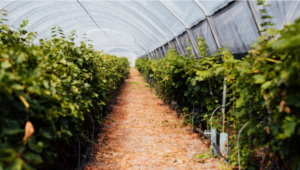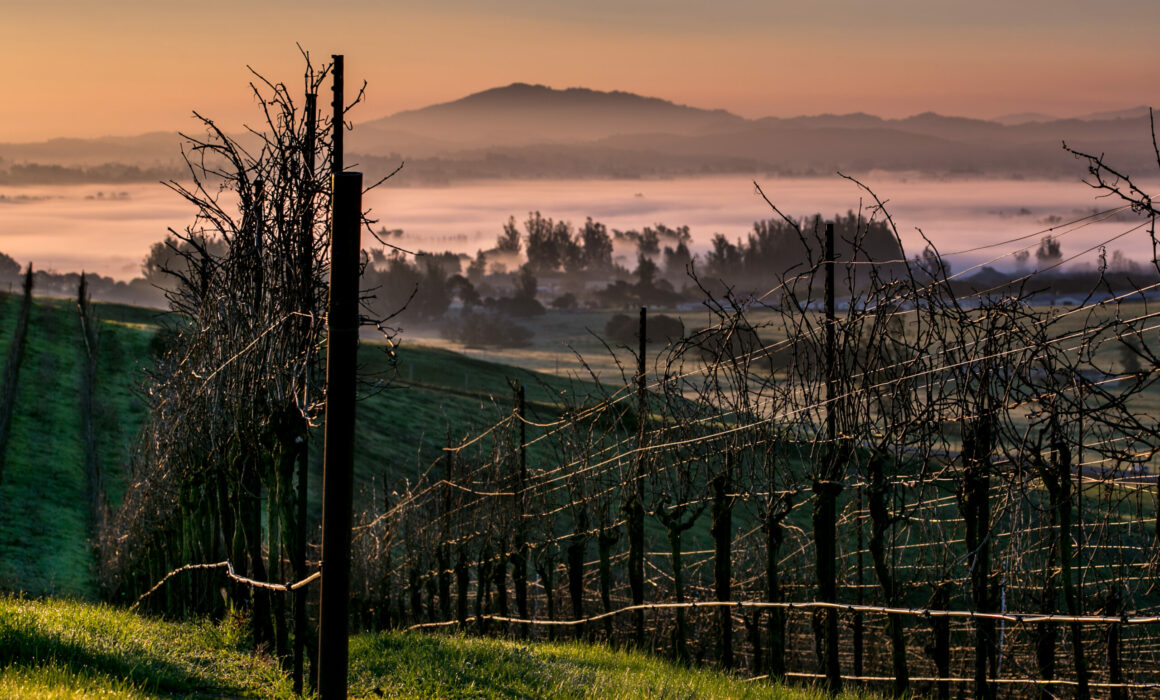When the Last Leaf Falls
The grapevines of Sonoma County are now naked of their leaves, marking the end of the year’s vine growth cycle. The vines will now lie dormant and store resources so they can grow leaves and grapes again next year.
Defoliation is a natural and necessary part of the process, happening at the end of every growing season. The first frost often kicks it into gear. By this time, typically the leaves aren’t green anyway, nor effective at photosynthesis, which is how we get the spectacular turning of the leaves to yellow, red and orange as they prepare to fall.
Reserves of carbohydrates are crucial to keeping the vines sustained through their long winter’s sleep.
“The vine responds to defoliation by producing new leaves on lateral shoots,” writes Jancis Robinson in The Oxford Companion to Wine. “However, this new growth will depend on the stored carbohydrate reserves of the vine for a month or so, and so will weaken the vine until the new leaves are able to produce carbohydrates and build up reserves again.”
This period of dormancy and rebuild is important of course. Instead of growing fruit, the plant’s roots grow and take up soil nutrients. With enough reserves, grapevine flowering and vegetative growth in spring should go well. Not enough reserves and low leaf-to-fruit ratios could occur, negatively affecting fruit sugars and phenolics the following year, in turn affecting color and flavor.
Sucrose is made in the leaves via photosynthesis, while starch is part of the carbohydrate reserve stored in the woody parts of the vine. Starch gets turned into sugars to fuel the growing of shoots in spring. Vines are also adept at storing extra energy which can be used when needed.
These reserves help keep vines alive and able to withstand freezing weather. Winter pruning during dormancy is all about managing the reserves available for shoot development. According to Oxford, the new shoots become independent of these reserves when the leaves reach about half their final size and enough photosynthesis can take place to continue growth.
Thus, at the end of the life cycle, it’s important to have as many carbohydrates on reserve as possible. This usually requires not only good training and pruning decisions, but also an appropriate amount of thinning to not overly restrict yield.
Where winters are particularly brutal, vines are buried beneath the soil or covered with mulch before the ground freezes to preserve any energy at all, the temperature of the soil warmer than the air above. This technique is expensive and labor-intensive, though necessary in some parts of Russia, Ukraine, China, Canada and the Finger Lakes region of New York.
Professor Li Demei, a Chinese wine authority and consultant, told Decanter in a 2020 interview that if the lowest temperature of a region regularly drops below -17 degrees C (1.4 degrees F), it becomes necessary to take special measures to protect the vines.
Vines are first pruned, and canes taken off their trellis. Fallen leaves and branches are removed to prevent disease. Vines are watered 10 days before burying in areas that are arid and may not get much winter snow and thus moisture. Two weeks before freezing temperatures are expected, vines are buried with just enough soil not to snap, not to be dug out again until spring.
The when is another sources of angst and poses another period of risk – unearth the vines too soon and frost can occur; too late and there could be rot from soggy soils.
Where it’s not quite that cold, farmers gather soil around the base of vines to protect them. Wind machines are another way to help increase temperatures around the vines, while geothermal (or frost) blanketing systems, also called geotextiles, are another tool.
A winery in Quebec is using not only geotextiles but geothermal energy to heat its vines, tapping into warmer temperatures 2 meters (6.5 feet) below the soil. Le Vignoble du Ruisseau Winery and Cidery claims to be the first vineyard in the world to use this kind of energy to protect its vines from the cold.

They have patented their system, which distributes heat across their fields, with tubing both above and below ground that carries underground heat to the surface via a glycol solution, keeping the temperature of the soil above -10 degrees C (14 degrees F) year-round. They also use geothermal heat to wake up the vines in spring.
In Sonoma County, we get cold in winter, but not that cold, another reason grapevines are so happy to live here. The mean minimum temperature in January ranges from 42 degrees F (5.5 degrees C) on the coast to 36-38 degrees F (2-3 degrees C) over most of the cultivated area. All-time lows are as low as 14 degrees F (-10 degrees C) in the coldest spots, according to records kept by Sonoma State University.
Past winter, past pruning, the leaves will begin to grow again when the ambient temperature gets to 50 degrees F (10 degrees C) or more, that treasure trove of carbohydrates ready to kick things back into gear.


